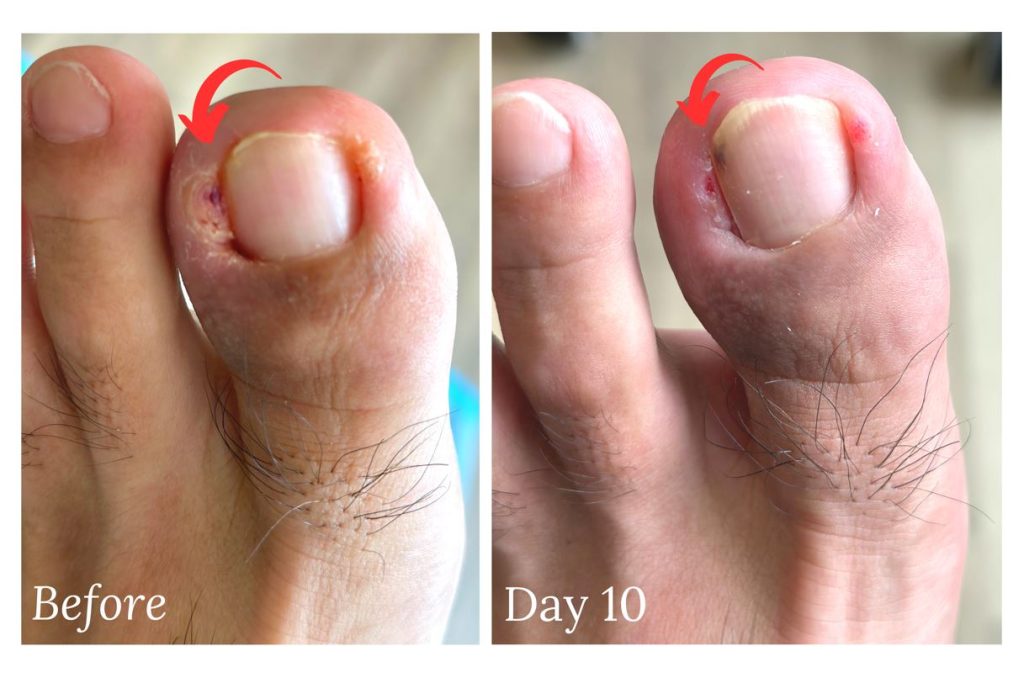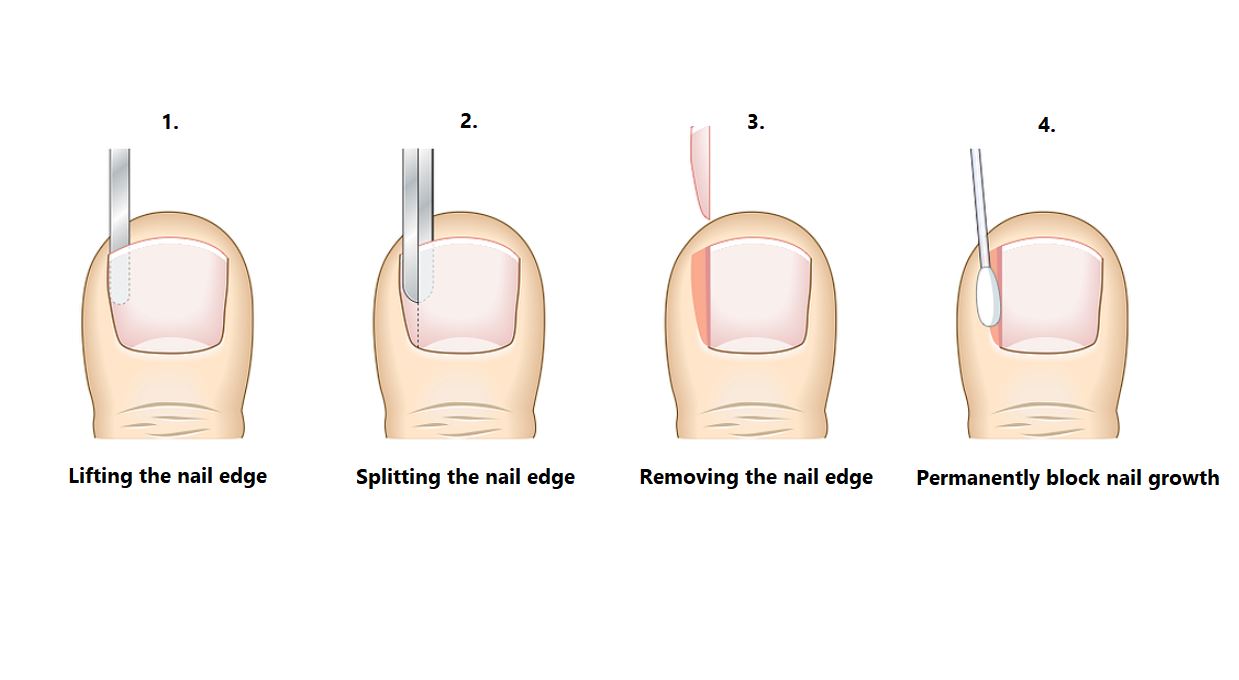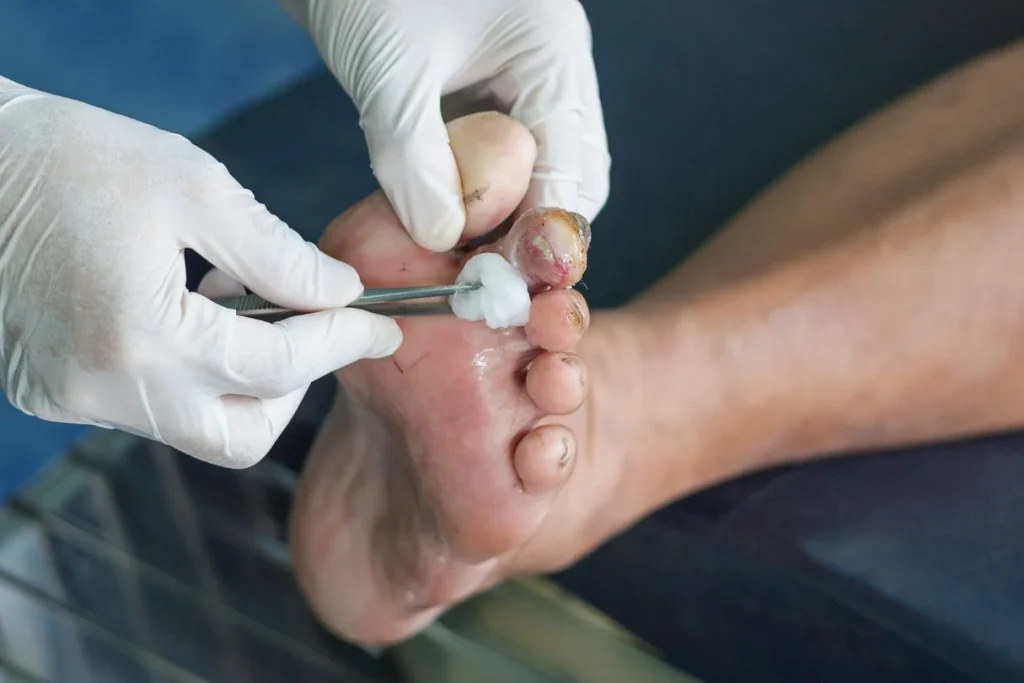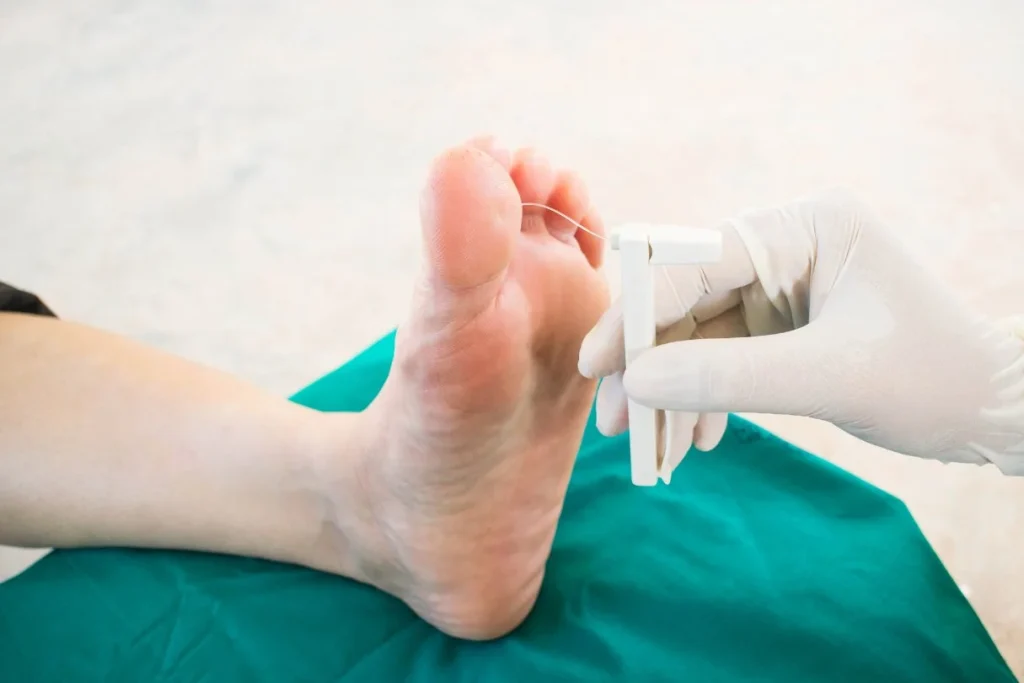What is Partial Nail Avulsion?
Partial nail avulsion is an ingrown toenail surgery method that involves removing a portion of the toenail from its nail root. The technique is designed to manage ingrown toenails by removing the entire nail edge that is cutting into the sides of the skin.
There are various ways to perform a partial nail avulsion procedure. In the past, many would perform the traditional technique, which is very invasive and often done in an operating theatre. At Straits Podiatry, we perform our partial nail avulsion in the clinic using a minimally invasive method that takes approximately 30 minutes.
The Permanent Solution to Ingrown Toenail
Many patients suffer repeated episodes of ingrown toenails despite having their nails treated or removed before. This is because the underlying nail root is still functional, and the nail continues to grow. It is important to understand that a partial nail avulsion alone does not prevent the nail from growing back.
The long-term solution to recurrent ingrown toenails is to apply a chemical to destroy the nail root completely following a partial nail avulsion. This complete procedure is known as partial nail avulsion with chemical maxtrixectomy. This ingrown toenail removal procedure has proved to be highly effective with low recurrence rates.
Need Help? See A Podiatrist Today
No Stitches, No Hospitalisation, You Can Walk Right After
Yes, this is true. Unlike the traditional methods, our partial nail avulsion with chemical matrixectomy procedure does not involve cutting your skin or any stitching. The procedure is also carried out under local anaesthesia, so it would be painless.
Here is what to expect during the ingrown toenail removal procedure:
- An anaesthetic injection is injected to numb the affected toe only
- The portion of the nail that is cutting into the sides of the skin is resected down to the nail root and is performed without cutting the skin
- The resected portion of the nail is removed, and a chemical is applied to destroy the nail root
- The chemical will be neutralized, and a sterile dressing will be applied to the toe
You might be wondering, “Wouldn’t there be a gap between the remaining nail and the skin?”. Yes, that is correct. However, this is the same as a wisdom tooth extraction, the gap will close once the wound has healed.

What Is The Expected Recovery Time After Partial Nail Avulsion?
The expected recovery for partial nail avulsion with chemical matrixectomy is between 2 to 4 weeks and is highly dependent on the age and health of the individual. Physical activity should be avoided following the procedure until otherwise advised.
Your podiatrist will also advise you on the management of the wound and suitable footwear options following the procedure. Generally, open-toed footwear is preferred to ensure minimal compression over the wound.
When Should Partial Nail Avulsion Be Avoided?
Partial nail avulsion is generally safe for young and healthy individuals suffering from recurrent ingrown toenails. However, there are conditions where we do not recommend this procedure.
You should avoid Partial nail avulsion with chemical matrixectomy if you have:
- Diabetes with diabetic foot complications (Neuropathy, peripheral vascular disease, diabetic foot ulcers)
- History of poor wound healing
- Bleeding disorders (e.g Hemophilia, warfarin, blood thinners)
- Poor circulation to the foot
Your podiatrist should assess the above to ensure that you are a suitable candidate prior to performing the ingrown toenail removal procedure.
Share this with someone you know
Frequently Asked Questions on partial nail avulsion
What is ingrown toenail surgery?
Ingrown toenail surgery is a procedure to manage patients with painful ingrown toenails. It is typically used on recurrent or severe cases of ingrown toenails. The name of the procedure we use is partial nail avulsion. It is a minimally-invasive technique that does not require any stitches or hospitalisation.
How long does ingrown toenail surgery take?
Does ingrown toenail surgery hurt?
What is the recovery time after ingrown toenail surgery?
What are the potential risks and complications of ingrown toenail surgery?
Common risks and complications of partial nail avulsion include:
- Bleeding
- Nerve pain
- Infections
- Delayed wound healing
Will my nail grow back after nail avulsion?
This depends on the procedure performed during the ingrown toenail surgery. A partial nail avulsion alone will not kill the root of the nail, and a new nail will grow back. A partial nail avulsion with chemical matrixectomy, on the other hand, will destroy the nail root and will stop the nail from growing back.
Will I be able to continue my daily activities after nail avulsion?
Search
Do You Have A Question? Ask Us...
Categories
- Ankle (4)
- Diabetic Foot (7)
- Feet (5)
- Knee (5)
- Paediatric Lower (5)
- Soft Tissue (3)
- Uncategorized (60)





